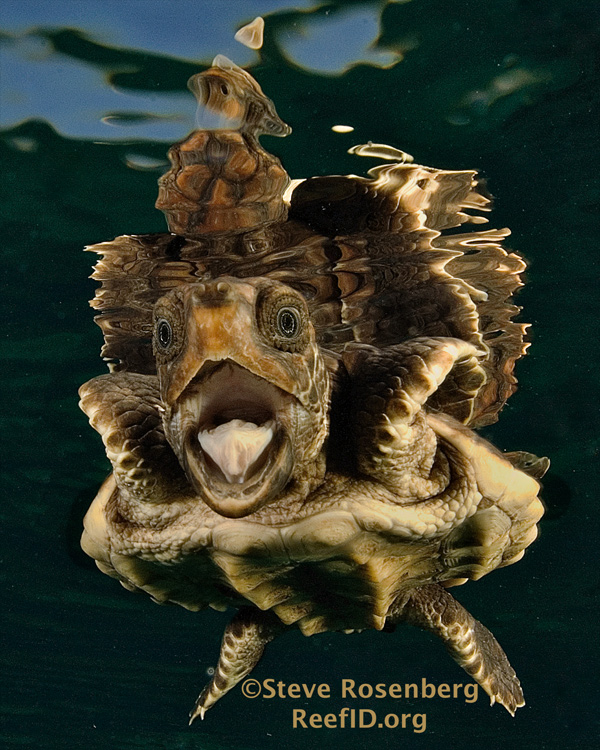Image: Steve Rosenberg’s juvenile loggerhead

As is the case with many images, the hard part is putting yourself in a position to get the image. This shot of the juvenile loggerhead was taken during one of the many turtle release operations by Jim Abernethy’s Scuba Adventures trips. His crew was releasing green, ridley and loggerhead turtles into the wild, at the edge of the gulf stream in the Bahamas. Loggerhead turtles are the easiest of the three to work with because they seem to be more interested in checking out and challenging the other turtle (its reflecton in the dome) than escaping into the wild. I chose to photograph one of the juvenile loggerhead turtles for this reason.
Using an old school technique (from film days), I set my Nikon D300 on manual so that I could pre-set the focal distance on the lens. I used a 12-24 mm Nikkor lens with a plus 2 diopter, set at the closest focal length setting, behind a 10” dome on my SUBAL housing. This gave me a working depth of field of about 5 inches just off the surface of my dome. This was perfect for working with an animal that seemed very curious about its reflection. I had plenty of time (at least five seconds) to compose and take the shot.
The settings I used were 400 ISO, a shutter speed of 1/200 (to stop action) and an aperture of F22 to maximize the depth of field. I was able to use these settings because we were working in bright daylight at the surface. Because I was shooting natural light, I was careful to approach the subject with the sun behind me to help light the turtle. Use an upward angle to take the shot so that you include the reflection. Using a magnifying viewfinder, I was able to concentrate on pressing the shutter when (1) I could actually see the reflection on the surface, (2) I could make sure that I had a full frame image of the subject, and (3) the subject was close to the dome and within the depth of field I had pre-established.